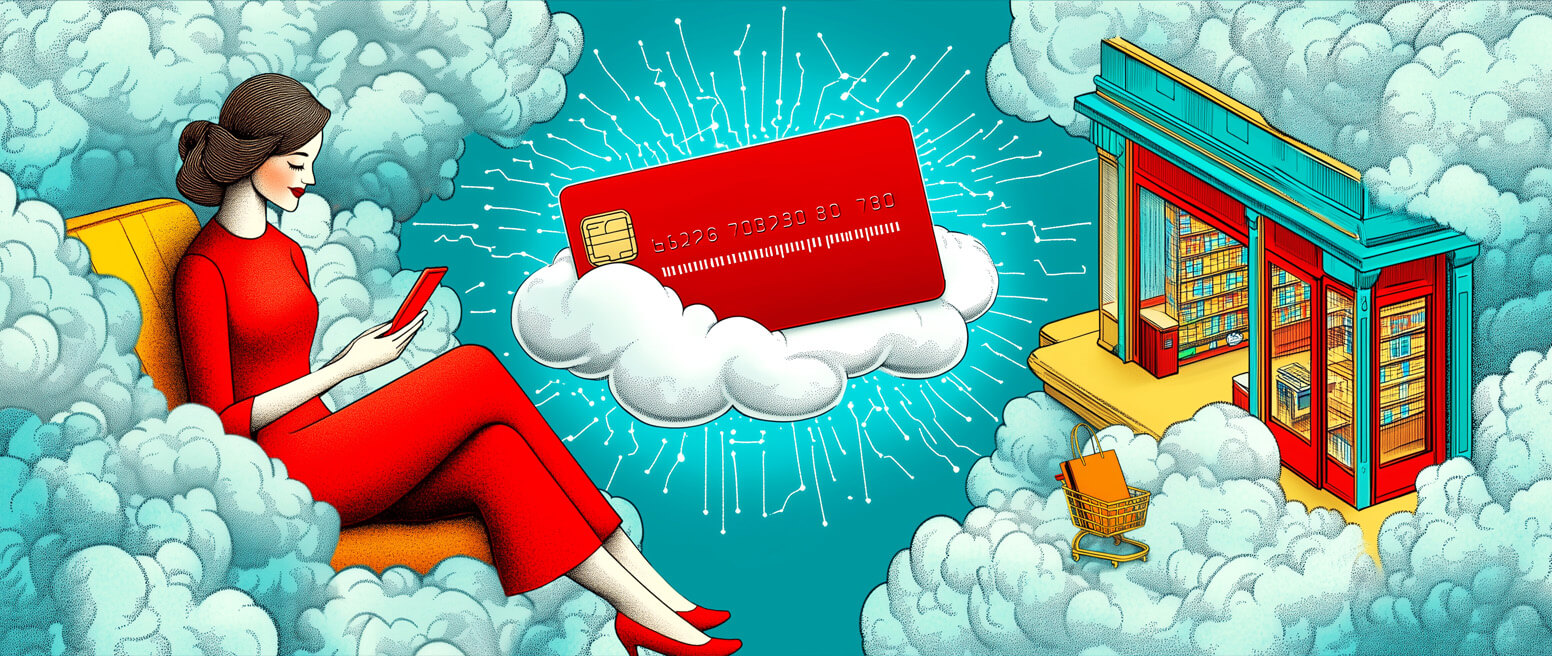These 10 Surprising Customer Service Statistics Show Why Great Service Really Makes a Difference
We’ve all been through it.
You call a customer service line and end up in a maze of automated questions that seem to go nowhere. You tap “0” in hopes of reaching a live person, but it’s no good. You’re stuck listening to bad jazz that’s occasionally interrupted by a computer voice saying “your call is important” and to “please hold for the next available representative.” And, there’s no sign as to how long you’ll be stuck waiting for help.
The quality of your customer service is one of the most important factors in maintaining customer loyalty. It ranks right alongside brand recognition, product offerings, and price. In fact, one study from Hubspot found that over 90% of customers are likely to make repeat purchases from retailers that provide excellent customer service.
We’ve collected a bunch of other key statistics (which we’ll explore below) that demonstrate what a huge impact the customer experience can have on your business. Comparing these customer service facts to your own business may be an eye opener; it can show you how your buyers really think about you.
Recommended reading
- Analyzing Consumer Buying Behavior in 11 Different Verticals - Chargebacks911
- Top 15 Customer Returns Reasons in 2025 & How to Avoid Them
- Online Shopping vs In-Store Shopping: the Future of Retail?
- Economic Uncertainty Pushes Consumers to File Chargebacks
- They’re Here — Cyber Week 2024 Stats & Analysis!
- Card-Not-Present Transactions: Know the Risks & Rewards
The State of Customer Service
“Customer service” can really be expanded to encompass every touch point between you and your customers — before, during, or after the sale. That said, we tend to think of it as being most associated with resolving shoppers’ issues.
Buyer expectations have changed a lot in recent years, though. From an unexpected pandemic to technology that seems to evolve daily, it’s tough to keep pace with where your buyers are at. At its core, however, customer service is still built around one main objective: a fast, professional experience that actually resolves the caller’s issue.

Customer service is your first-line opportunity to recover sales, prevent disputes, improve your reputation and customer relations, and expand your customer base. It’s a crucial aspect of your operations. To illustrate, consider that nearly six in ten consumers surveyed had contacted a business’s customer service line in the past month, according to Statista.
Part 1: The True Cost of Bad Customer Service
So, we know that customer service is important. How does that play out in real life, though?
Before we dive into customer expectations and how to satisfy them, it’s important to get a clear understanding of what’s at stake. What’s the real cost of customer service blunders?
The following customer service statistics can help shine a light on the matter:
Part 2: What Do Customers Really Expect?
So what is “good” customer service? Again, the best way to know is to ask actual shoppers what’s important to them. For example, 90% of consumers worldwide say that issue resolution is their #1 customer service concern. If your customers feel the same way, overreliance on an automated answering system could be a liability.
Good customer service statistics come from understanding your audience’s needs, likes, and expectations. For example:
Part 3: The Impact of Customer Service
Frustrated customers are bad enough, but the damage from inadequate customer service doesn’t stop there.
Opinions spread fast in the age of the internet. One customer’s dissatisfaction can be seen by millions of potential customers around the world before you have a chance to act and mitigate the damage.
8 Best Practices to Optimize Customer Service
The bottom line here is simple: the customer experience matters.
Customer experience has more of a direct impact on your bottom line than nearly any other factor. The research from SmartKarrot backs this up; 75% of buyers claim that how they’re treated is a deciding factor in purchase decisions.
Let’s be honest: similar products and services are becoming more and more available from a wider number of merchants. Therefore, the customer experience you deliver may be what sets your business apart.
A positive encounter can lead to more conversions, higher profits, and greater long-term loyalty. It can also help prevent bad reviews and other revenue threats, such as chargebacks. At the same time, we naturally tend to remember bad experiences over positive ones. That’s why it takes 12 positive customer experiences to make up for one negative experience.
So what can you do to ensure your customers get the best service? Here are a few suggestions:
Best Practice 1 | Be Available
If customers can shop on your website 24 hours a day, shouldn’t they be able to talk to customer service the same way? Find a way to offer “anytime” support, even if that means hiring an answering service.
Best Practice 2 | Make Contact Easy
Don’t force customers to hunt for customer service contact information. Put phone numbers, web addresses, or SMS numbers in any place a user might look, including on every web page.
Best Practice 3 | Provide Live Support
As we’ve seen, most customers prefer to talk to live people. This may be on the phone, via live chat, or through some other channel. Offer as many live interaction options as possible. Data published by Ruby shows that 77% of consumers won’t purchase from brands that don’t offer live chat support.
Best Practice 4 | Provide Self-Service Options
We just talked about the importance of live interaction. But still, while many customers want to talk to agents, others prefer to find answers themselves. Offer an accessible knowledge database, including FAQs and online text or video posts. Make this information easy to find, allowing customers to resolve their own questions.
Best Practice 5 | Train Your Agents
Service reps who don’t know your products are unlikely to resolve customer issues. Implement regular training for products, policies, and services. Be sure your reps know of new product features.
Best Practice 6 | Encourage Feedback
Do you actively encourage feedback? 77% of shoppers say they prefer brands that invite and accept customer input. Solicit customers’ opinions – both good and bad – and make it easy for them to respond.
Best Practice 7 | Respond Quickly
Customers want to know you’re listening, so respond right away to emails, online reviews, phone calls, and social media posts. If you can’t address the issue immediately, state when callers can expect a more comprehensive reply.
Best Practice 8 | Listen and empathize
Customer service reps WILL get angry calls from time to time. It just comes with the territory. What you don’t want them to do is get defensive or lose their cool. Acknowledge the caller’s problem, apologize, and work to resolve the issue amicably.
Above all, customer service must resolve issues, quickly and efficiently, with as little inconvenience to the customer as possible.
Strive to rectify problems during the first contact. If that proves impossible, take the initiative with further communications. Keep the consumer in the loop, and give them the impression that you’re working on their issue and haven’t forgotten them.
You don’t want to give your customer any reason to suspect that you cannot fix their problem. If you do, they’ll probably turn to the bank and file a chargeback, rather than continuing to work with your department.
The Bottom Line
Customer service has a huge impact on your revenue. On average, companies can earn $775 million over a three-year period simply by delivering a good experience.
Even despite everything we’ve talked about today, a good number of retailers are probably going to continue viewing customer service as “a necessary evil,” rather than a driver for growth. Don’t be among them. In an increasingly customer-centric world, that’s a mistake you can’t afford to make.
FAQs
What percentage of customers call customer service?
All consumers will likely call a customer service line at some point. If fact, research shows that 58% of respondents said they contacted customer service in the past month.
What is the number 1 rule in customer service?
Solve the customer’s problem, as quickly and effectively as possible. Respecting the customer’s time is important, of course, but studies have shown that consumers will even tolerate a slight bit of rudeness if their problem is resolved.
What are the benefits of customer service?
Outstanding customer service has direct benefits, such as higher conversions, increased revenue, and long-term customer loyalty. Since so many consumers share their experiences, good service can also lead to an enhanced reputation through word-of-mouth and reviews. Indirectly, it can help mitigate other revenue threats, like chargebacks.
What are signs of bad customer service?
Common signs of bad customer service include: inability to resolve the customer’s problem, long wait or on-hold times, reps who give inaccurate or misleading information, limited options for contact, and impolite or defensive responses.
What are bad customer service results?
A bad customer experience can have many negative impacts. If key pre-transaction information isn’t available or live chat operators take too long to respond, a shopper may simply abandon the order. Unsatisfied customers will typically share their experience with 10-15 others, plus leave bad reviews on social media. The end result is damage to the business’ long-term reputation. Also, customers whose situations are not resolved are likely to file a chargeback instead of dealing further with the merchant.
How effective is customer service?
With more and more outlets competing for the same business, the most effective way to win and keep customers is through outstanding customer service. Products, brands and prices are often similar across multiple merchants, meaning that the customer experience is the primary vehicle for setting your business apart.














